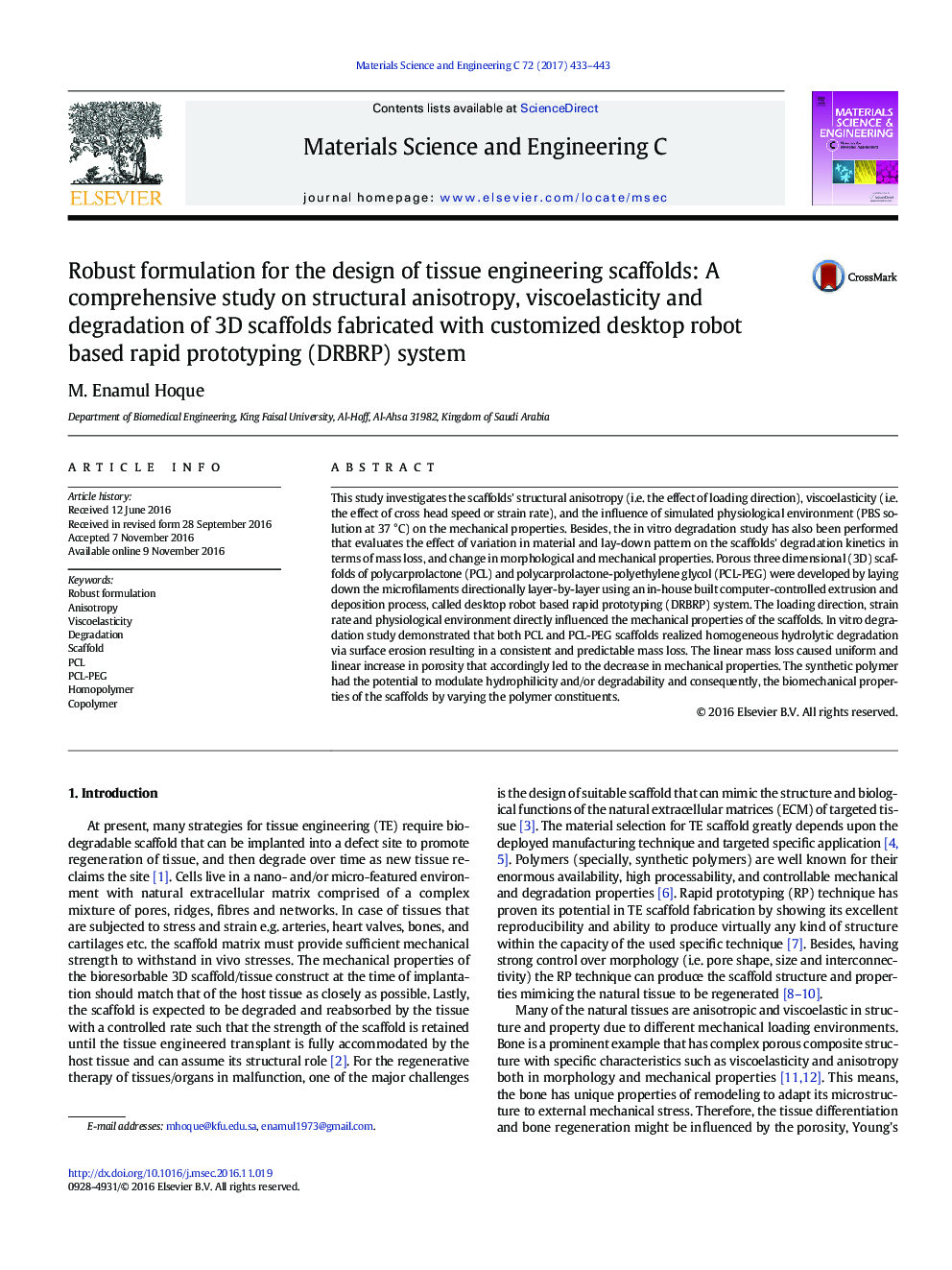| کد مقاله | کد نشریه | سال انتشار | مقاله انگلیسی | نسخه تمام متن |
|---|---|---|---|---|
| 5435222 | 1509149 | 2017 | 11 صفحه PDF | دانلود رایگان |

- Structural anisotropy, viscoelasticity and physiological environment directly influenced the scaffolds' properties.
- In vitro degradation study evaluates the degradation kinetics of the scaffolds.
- Both PCL and PCL-PEG scaffolds realized homogeneous hydrolytic degradation.
- This study is to determine the suitability of a particular scaffold to cater for a targeted tissue engineering application.
This study investigates the scaffolds' structural anisotropy (i.e. the effect of loading direction), viscoelasticity (i.e. the effect of cross head speed or strain rate), and the influence of simulated physiological environment (PBS solution at 37 °C) on the mechanical properties. Besides, the in vitro degradation study has also been performed that evaluates the effect of variation in material and lay-down pattern on the scaffolds' degradation kinetics in terms of mass loss, and change in morphological and mechanical properties. Porous three dimensional (3D) scaffolds of polycarprolactone (PCL) and polycarprolactone-polyethylene glycol (PCL-PEG) were developed by laying down the microfilaments directionally layer-by-layer using an in-house built computer-controlled extrusion and deposition process, called desktop robot based rapid prototyping (DRBRP) system. The loading direction, strain rate and physiological environment directly influenced the mechanical properties of the scaffolds. In vitro degradation study demonstrated that both PCL and PCL-PEG scaffolds realized homogeneous hydrolytic degradation via surface erosion resulting in a consistent and predictable mass loss. The linear mass loss caused uniform and linear increase in porosity that accordingly led to the decrease in mechanical properties. The synthetic polymer had the potential to modulate hydrophilicity and/or degradability and consequently, the biomechanical properties of the scaffolds by varying the polymer constituents.
Degradation profile of the scaffolds with various lay-down patterns (representative material: PCL) for the degradation period of 25Â days.144
Journal: Materials Science and Engineering: C - Volume 72, 1 March 2017, Pages 433-443